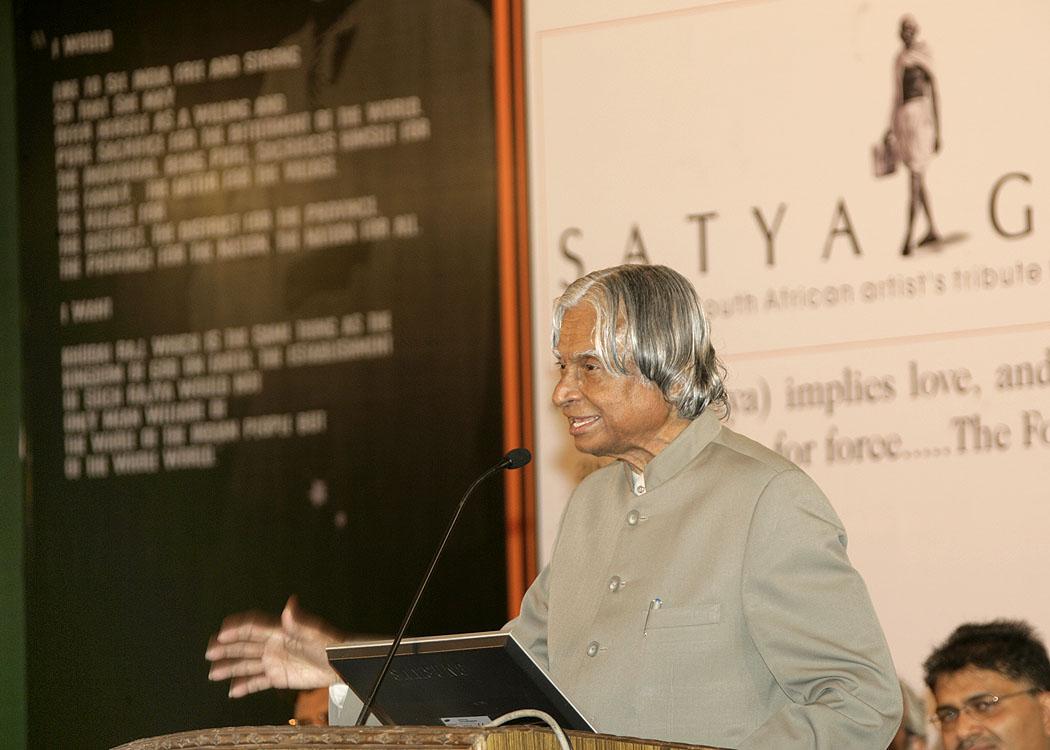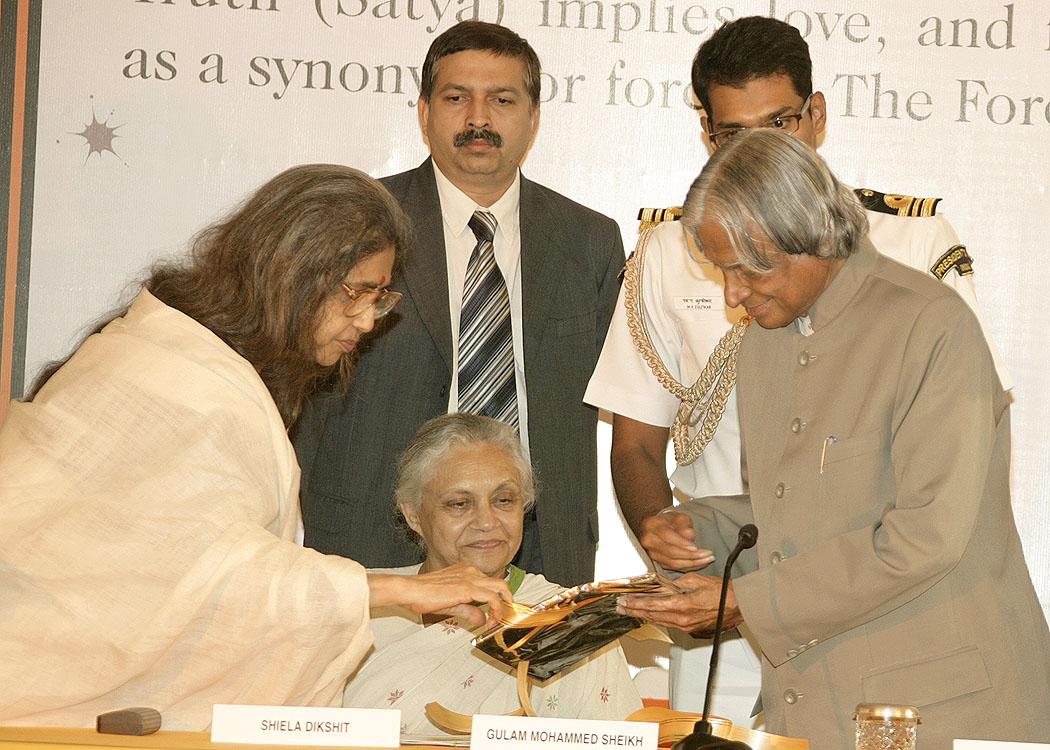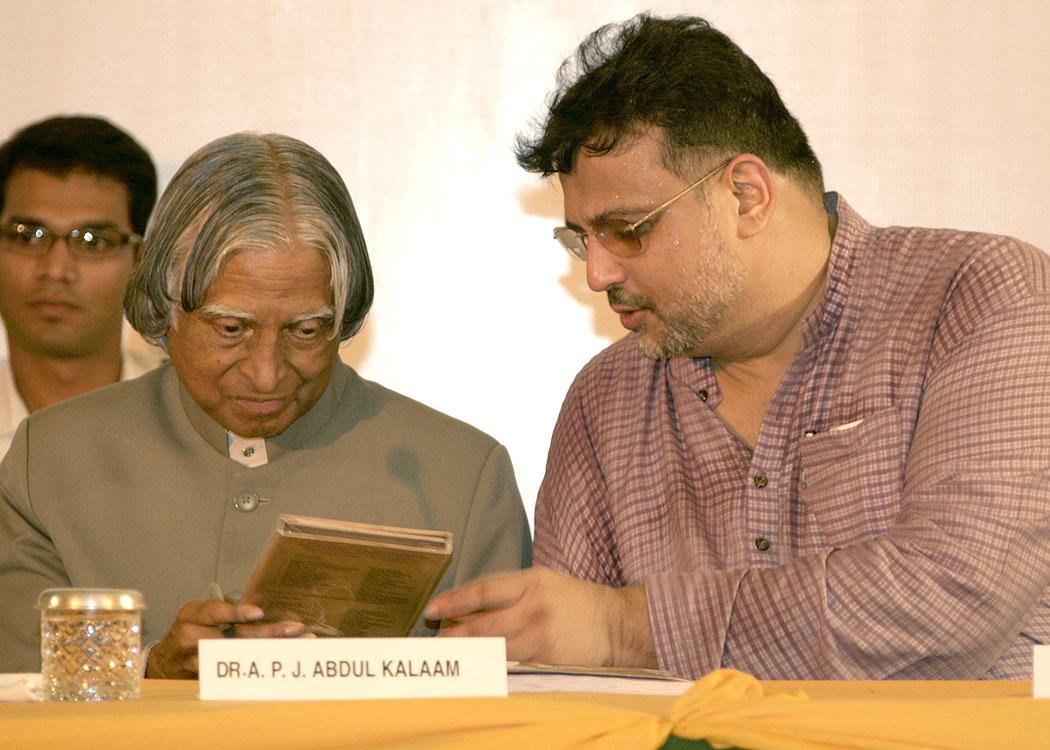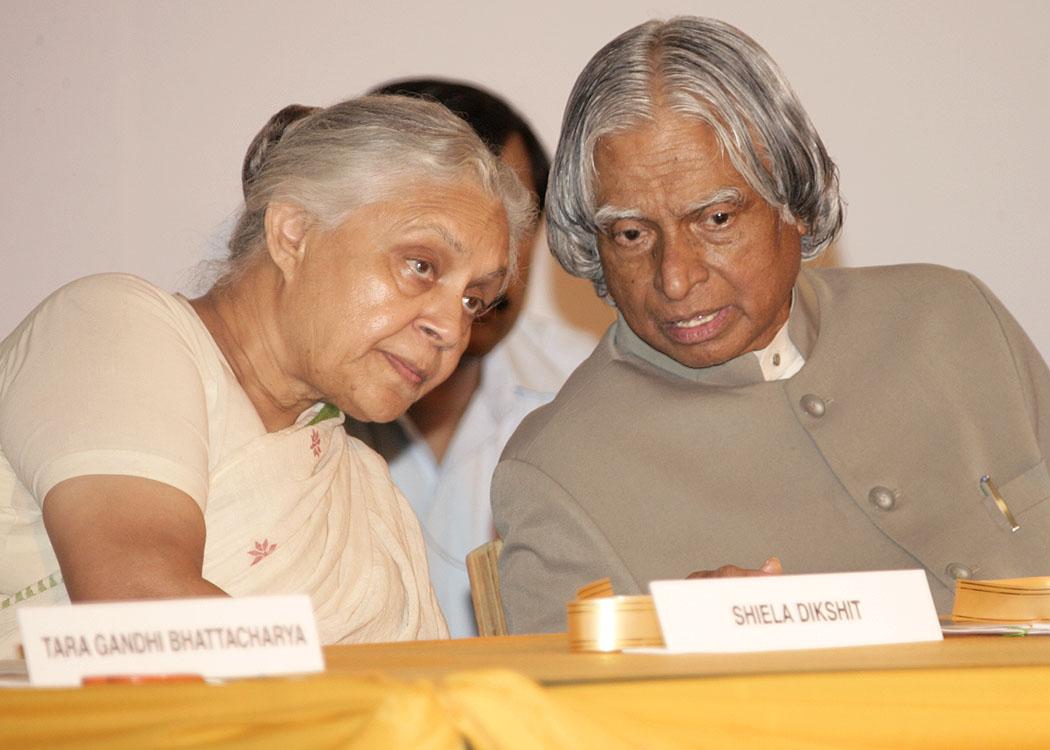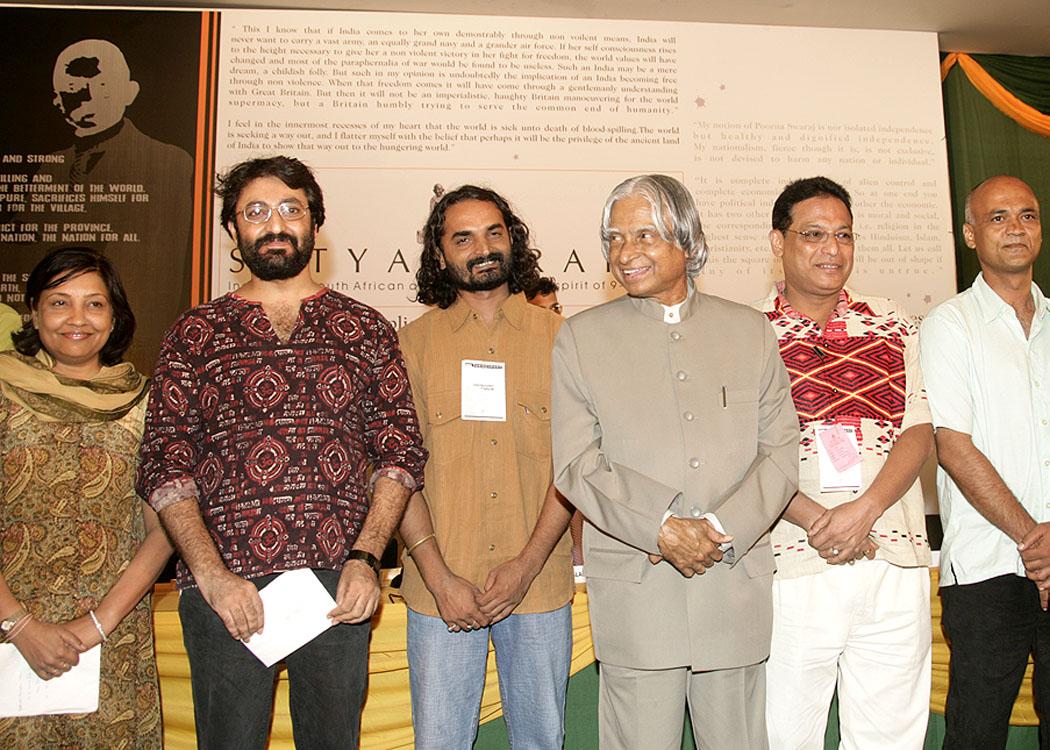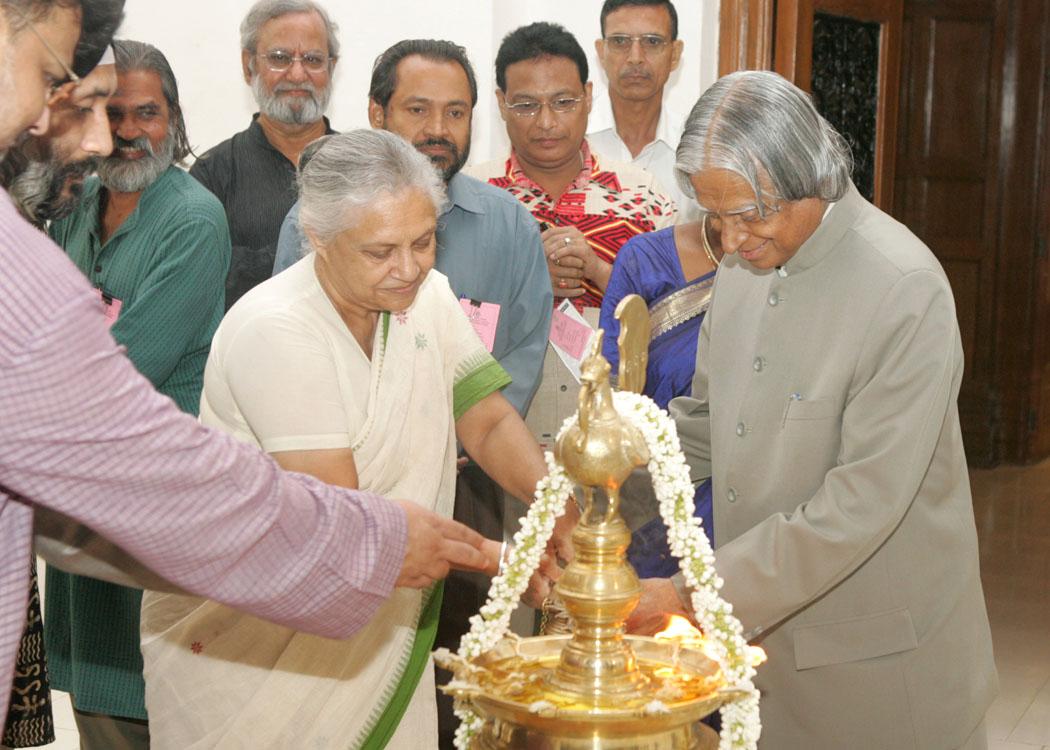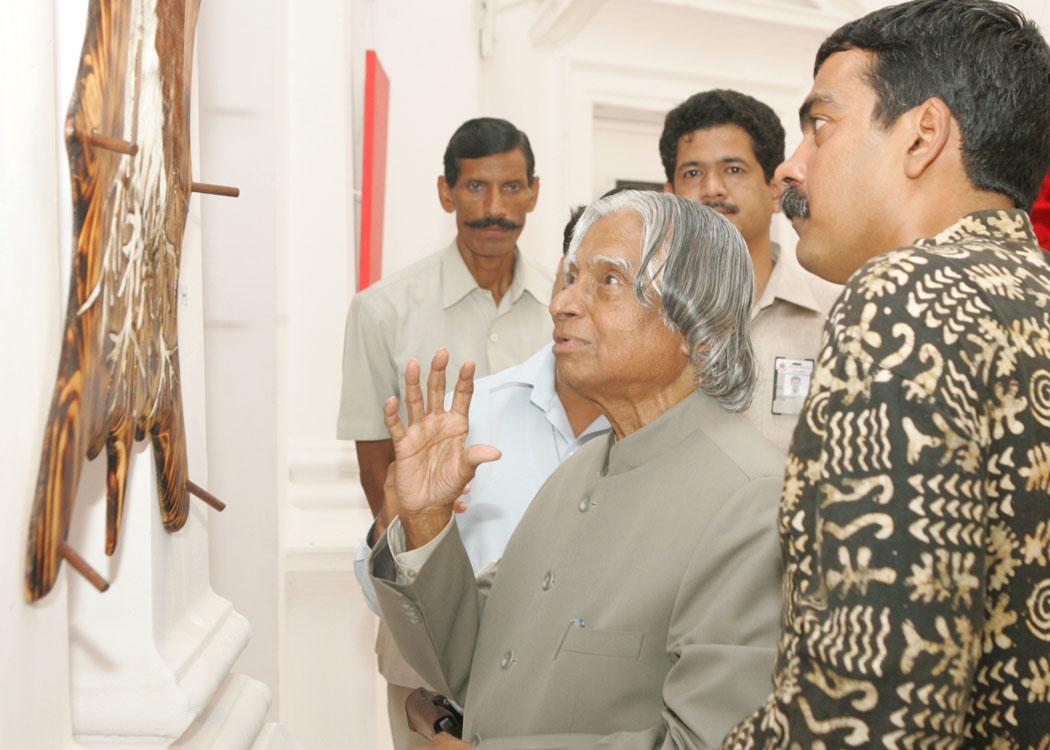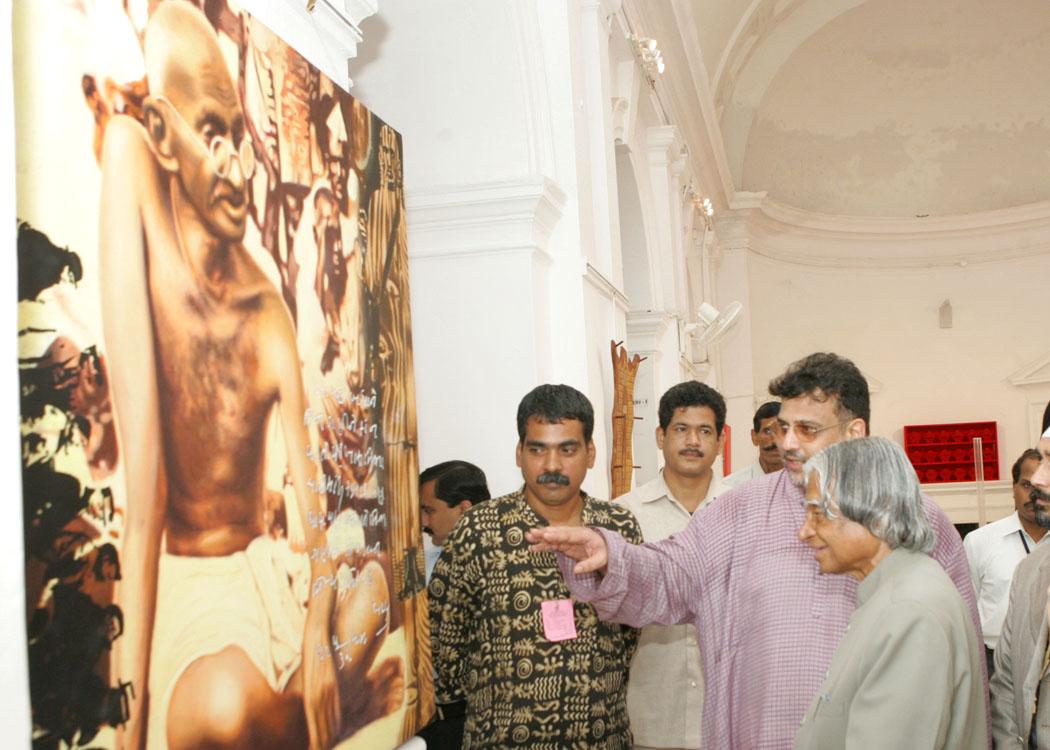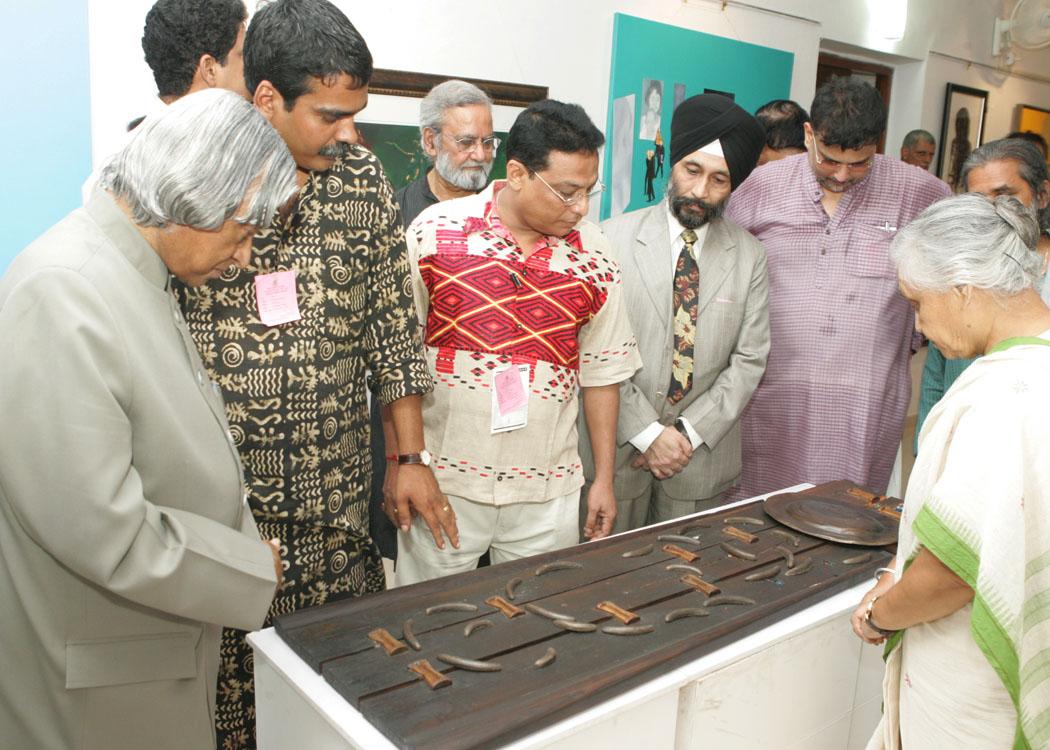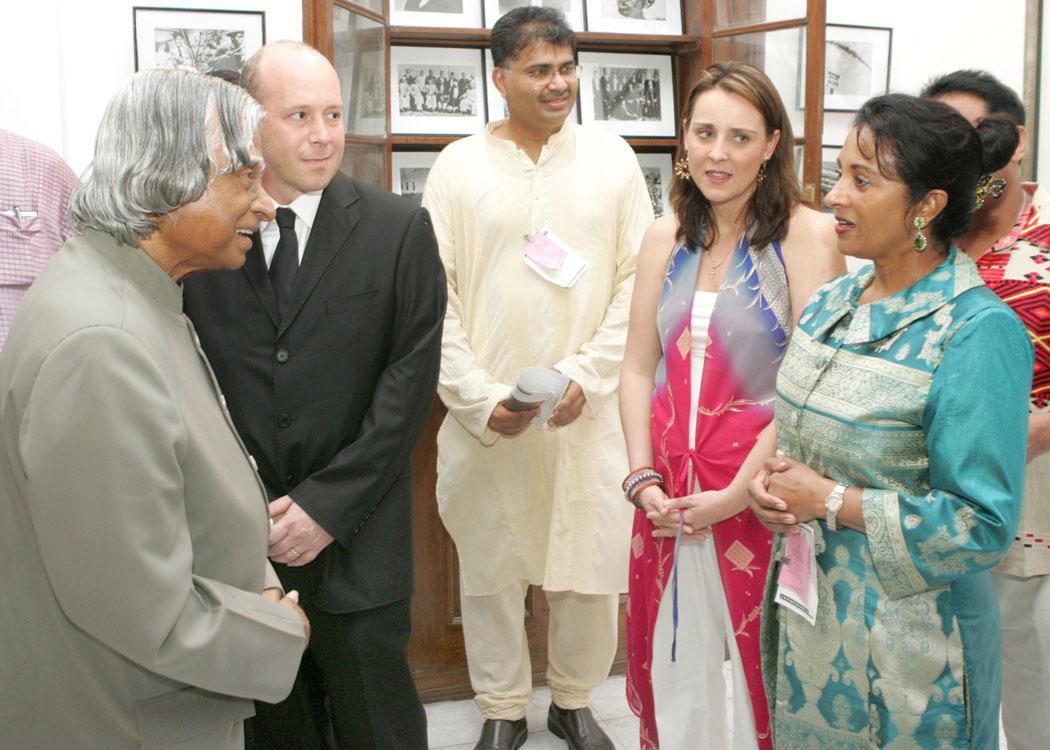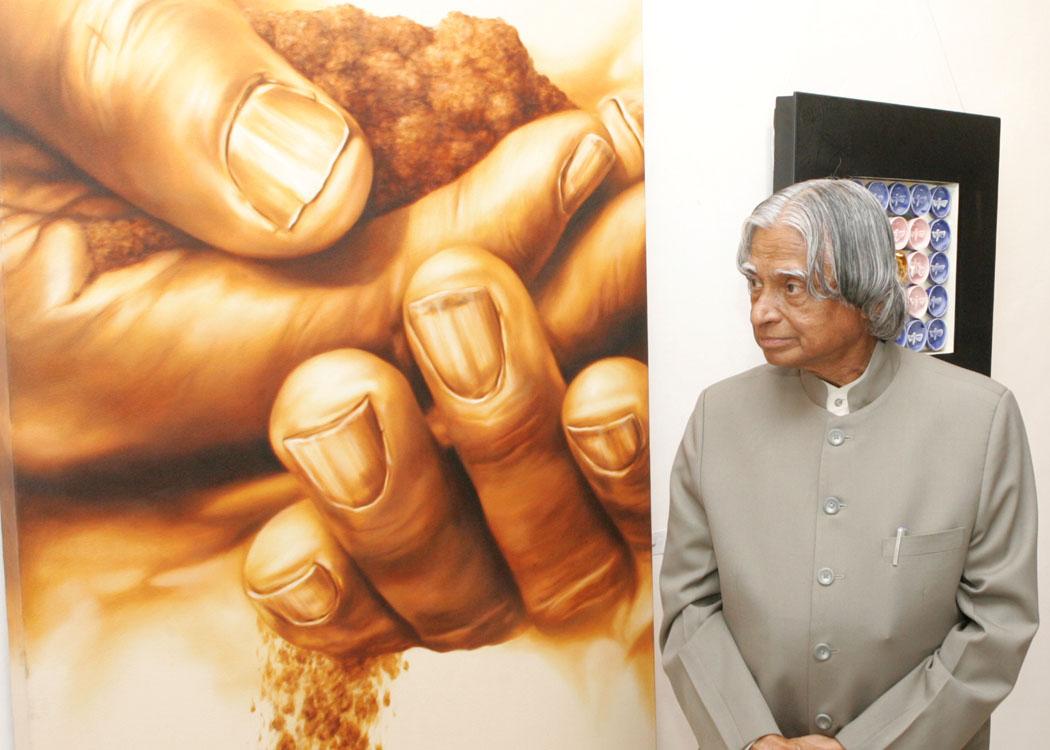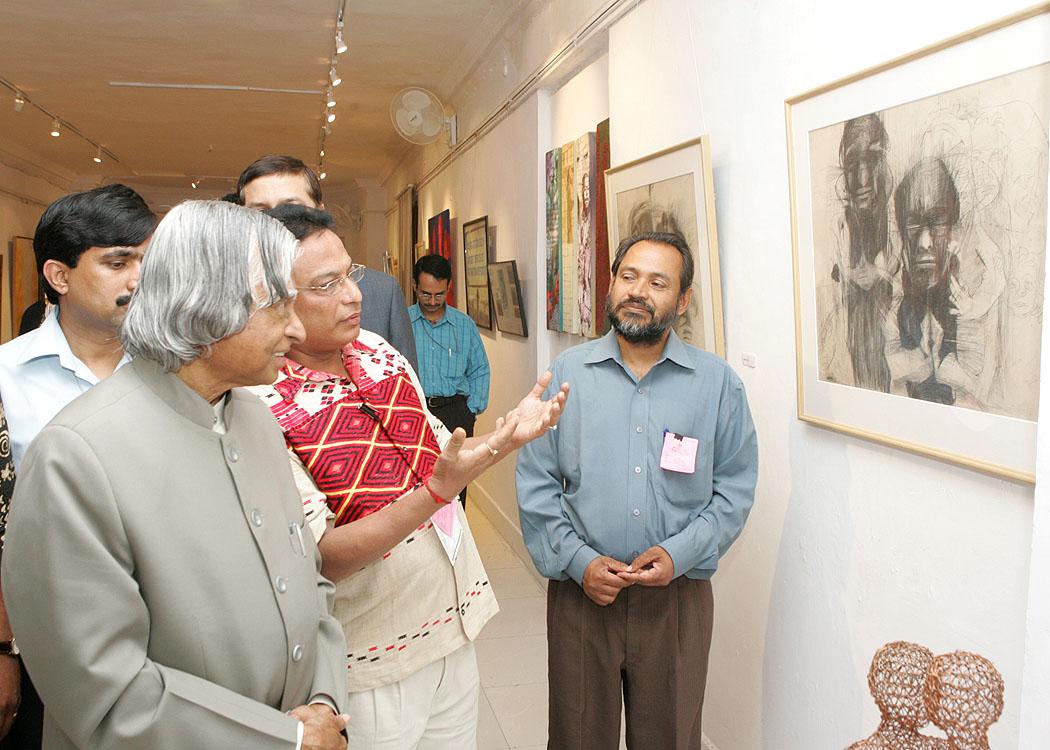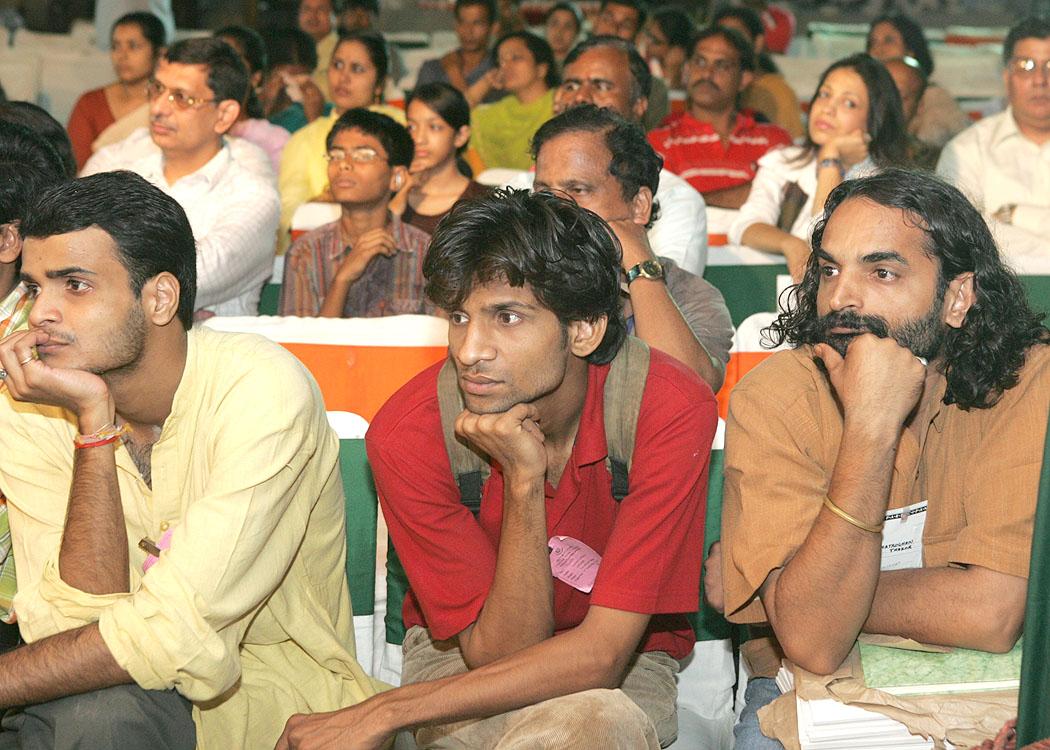Address at the Inauguration of the Dr. B.p. Pal Birth Centenary Symposium on 'search for New Genes', National Agriculture Science Centre Complex, New Delhi
New Delhi : 01-09-2006
Enriched Art Penetrates Minds
I am indeed delighted to participate in the inauguration of the Satyagraha Centenary Exhibition organized by Afrikhadi-India in partnership with Travancore Gallery. I extend my greetings to the organizers, Indian and South-African artists, art-lovers, freedom fighters, students and other distinguished guests. I am happy that in the Centenary Year of Satyagraha, this exhibition showcases the visual journey in quest of the principle and various manifestations of Satyagraha. The contemporary artists of India and South Africa have interpreted the modes of non-violent struggle and have given a symbolic visual interpretation to Satyagraha. I congratulate the artists on this achievement.
Origin of Satyagraha
While participating in this Exhibition, I am reminded of the famous train journey of Mahatma Gandhi and the treatment meted out to him at Pietermartizburg. During my visit to South Africa I boarded a simulated train at Penrich Railway Station near Durban for a journey to Pietermartizburg, just tracing the footsteps of Mahatma Gandhi. It was from Durban station that Mahatma embarked on the fateful journey that in later years is regarded as having changed the course of his life. He boarded the train on 7th June, 1893 in order to travel to Pretoria, where he was due to meet legal clients. A first class seat was booked for him. The train reached Pietermaritzburg station at about 9 p.m. A white passenger entering the compartment could not stomach a coloured person traveling with him. So he went out and returned with two officials who ordered Gandhiji to move to the van compartment. Later, a white constable was called who took Gandhiji by hand and pushed him out of the train. His luggage was also taken out and the train continued its journey without him. Gandhiji spent the night in the waiting room. It was winter and the weather was bitterly cold. And although his overcoat was in the luggage, Gandhiji did not ask for it fearing further insults. Gandhiji contemplated returning to India but decided that such a course would be cowardice. He vowed to stay and fight the disease of racial prejudice. This changed the course of his life. Gandhiji even said: "my active non-violence began from that date (7th June, 1893). The path of ahimsa is great innovation of the human mind and it was a very powerful non-violent tool that was instrumental in achieving our country?s freedom. I was witnessing many such scenes today, in the paintings and the artistic works which I saw.
Creativity of Artists
The creation of major events of this kind for posterity brings out not only the creativity of the artist, but also becomes a great motivating factor for future generations. I have seen the creativity of Shri Amarnath Sehgal through his paintings of life pattern of human lives of our planet. He has been depicting each social and political event whether it is a freedom struggle in Namibia or economic turmoil in Africa or the spectre of terrorism in the world. He has also created monumental sculptures which adorn in many parts of the world such as Mexico, Berlin, Geneva, Africa and India. He has always been concerned about the theme of peace. He felt that art and artistic expression can create peace.
During my visit to South Africa, I visited Robben Island in the Atlantic Ocean. I saw the prison cell, where Dr. Nelson Mandela was imprisoned for 26 years. I was really moved how an indomitable personality was chained bodily whereas the mighty soul was totally free. This was beautifully sculptured by Amarnath Sehgal in 1986, in the form of a bronze block image "The Captive".
The sculpture reveals the chained body from all sides and the indomitable spirit of the mighty soul. Sehgal?s imagination was beautiful and creative. I thought it is a good occasion to share with you this thought, when you are displaying the events of Satyagraha drawn by many professional artists from India and Africa to recreate the spirit of Satyagraha.
Articulations
Recently, I happened to study a book called "Articulations" - Voices from the contemporary Indian visual art. I was searching in the book about what is the unique quality of the great community of visual art and painting? What is their medium? What is the relationship and status of the society and the artists? Is there any connectivity between the medium of artists like ink and brush; and the society. While R.K. Laxman loves drawing crows for it stands out against any background, whereas KK Hebber is inspired by rhythmic movement of lines. When MF Hussian says the paintings are the output of the society, it means: if the society is a mediocre society, you will get mediocre paintings, if the society is intellectual and prosperous, the paintings will reflect the situation. From these Articulations, definitely I realize that every painter and artist is a unique personality, in search of beauty out of every event, which enriches him. I tend to agree with one of the artists, who say that the artists have to have "partnership with known, unknown will express itself." We all know that there was a Satyagraha in 1906. The unknown part of the Satyagraha has been depicted by the Indian and South-African artists using their own individual creativity.
My Experience
Some time back, I composed a poem in my mother tongue and translated it into English, titled "Life Tree". The message in the poem was celebration of life. While composing I never thought that the poem can be given life, beauty and creativity as I visualized. That is the time a young artist came and stayed with me in Rashtrapati Bhavan to picturise the natural beauty of Rashtrapati Bhavan and the Mughal Gardens. He stayed with his family for two weeks and has created beautiful canvases bubbling with full of life. I can see in the paintings beauty of the flowers, smell the fragrance of the flowers, and taste the honey in the flowers and speaking to me with poems. When Manav came across my poem "Life Tree? he fell for it and he took seven days in the beautiful environment of the Mughal garden for transforming "Life Tree" into a speaking tree. What a beautiful creation? First time I realized painting and poem intertwined with the imagination of a painter, which leads to the birth of a new creation. That new creation touches your heart, smoothens your feeling and transmits beauty and peace of the combined art into every artistic person and showers happiness in his or her mind and soul. I am sure that the Poets who will be seeing these pictures of creative arts may be able to compose beautiful verses to describe the scenes.
Rashtrapati Bhavan Exhibitions
Rashtrapati Bhavan is a repository of many art works which portrays beautiful moments, historical moments, moments which have gone down the annals of history. In order to display such priceless pieces of art and also to encourage young and contemporary artists in the field of painting and sculpting, we have been hosting exhibitions of paintings and sculptures on the occasion of Independence Day and Republic Day. Till now we have hosted 3 such exhibitions which were very well represented by artists both renowned and budding. The elements of Satyagrah, Freedom and the Nationalist fervor were clearly visible in the paintings and sculptures. In the recent exhibition which was held on the 15th August this year, there was a painting by Vijendra Sharma, a young artist which was very thought provoking. The theme of the painting was ?Mahatma Gandhi never dies?. The painting showed the cloth which the Mahatma wore against the backdrop of the National Tri-colour with 3 flowers, which the artist told me, represented the 3 bullets which wounded the Mahatma for ever. The second painting depicts Mahatma Gandhi on his Dandi March, which had impressed me from my childhood. A Young Artist, Shri Sanjay Bhattacharya, translated my desire and put Mahatma Gandhi on his Dandi March on a large canvas. I feel very happy that it now adorns the Banquet Hall of Rashtrapati Bhavan.
A Novel Present
Some time back, I had an opportunity to meet Shri R.K. Laxman in Rashtrapati Bhavan. It was a great pleasure interacting with this great personality. After his visit while leaving Rashtrapati Bhavan he presented a beautiful cartoon of Lord Ganeshji drawn by him. I was trying to understand what Shri Laxman wants to convey through this cartoon. When I went through, I found that Shri Laxman had drawn the common man in front of the Lord Ganeshji with folded hands. He beautifully conveys with inbuilt humour the plight of the common man. The common man has lost all the hope and he has reached the altar of God and prays for his better way of life. Of course, in the comment, my friend, RK Laxman has marked me certain affectionate words. I realize now, it means, my mission has to be to lift the common man?s life to prosperity. What a beautiful thought! Can there be a more powerful method of communication?
Art and Culture
This Satyagraha Centenary Exhibition is a mirror that shows a dimension of our proud heritage of Ahimsa-Dharma. It reflects the whole movement through which India gets freedom from the British and the South Africans get freedom from the apartheid. The exhibition reminds us how newer technologies have influenced our life, and dimensions of newer languages, newer expressions and newer way of life. They are reminders of where we came from. They give us a great pleasure by satisfying our inner urge to see what we are missing in this "modern world".
Conclusion
An event of the past takes many dimensions resulting in integrated thinking. Thinking gives visualization and manifest in different forms. It may be painting, it may be music, and it may be sculptures. What I am seeing today at the Satyagraha Centenary exhibition where the past is meeting the present and creating the future. It is true when Mahatma Gandhi started the Satyagraha movement in South Africa, it appears in front of us, as the Robben Island where Nelson Mandela was imprisoned for over a quarter century by the apartheid system. This Sathyagraha transformed South Africa into a free nation defeating the very apartheid system as whole. The same Sathyagraha movement which spread to various places in India gave life to the freedom movement against the British rulers. Britishers were more frightened about the Sathayagraha movement rather than a violent movement for which they had a military answer. Thus two nations were the beneficiaries of Sathayagraha movement. The whole movement is presented in this art gallery beautifully by the artistic minds of both Africa and India. I am very happy to have seen this presentation, which reveals the thinking and imagination. These creations are not mere painting and sculpture, but they are images which talk to us about the past, the present and the future. I would like to congratulate the artists from both India and Africa who have really put in their might and worked to give us history, people and the events through these paintings and sculptures.
I inaugurate the Satyagraha Centenary Exhibition and my best wishes to all the members of Afrikhadi-India and the artists of India and South Africa success in their mission of promoting a sense of pride and confidence among our youth through the inspiration created by these pieces of art.
May God bless you.

